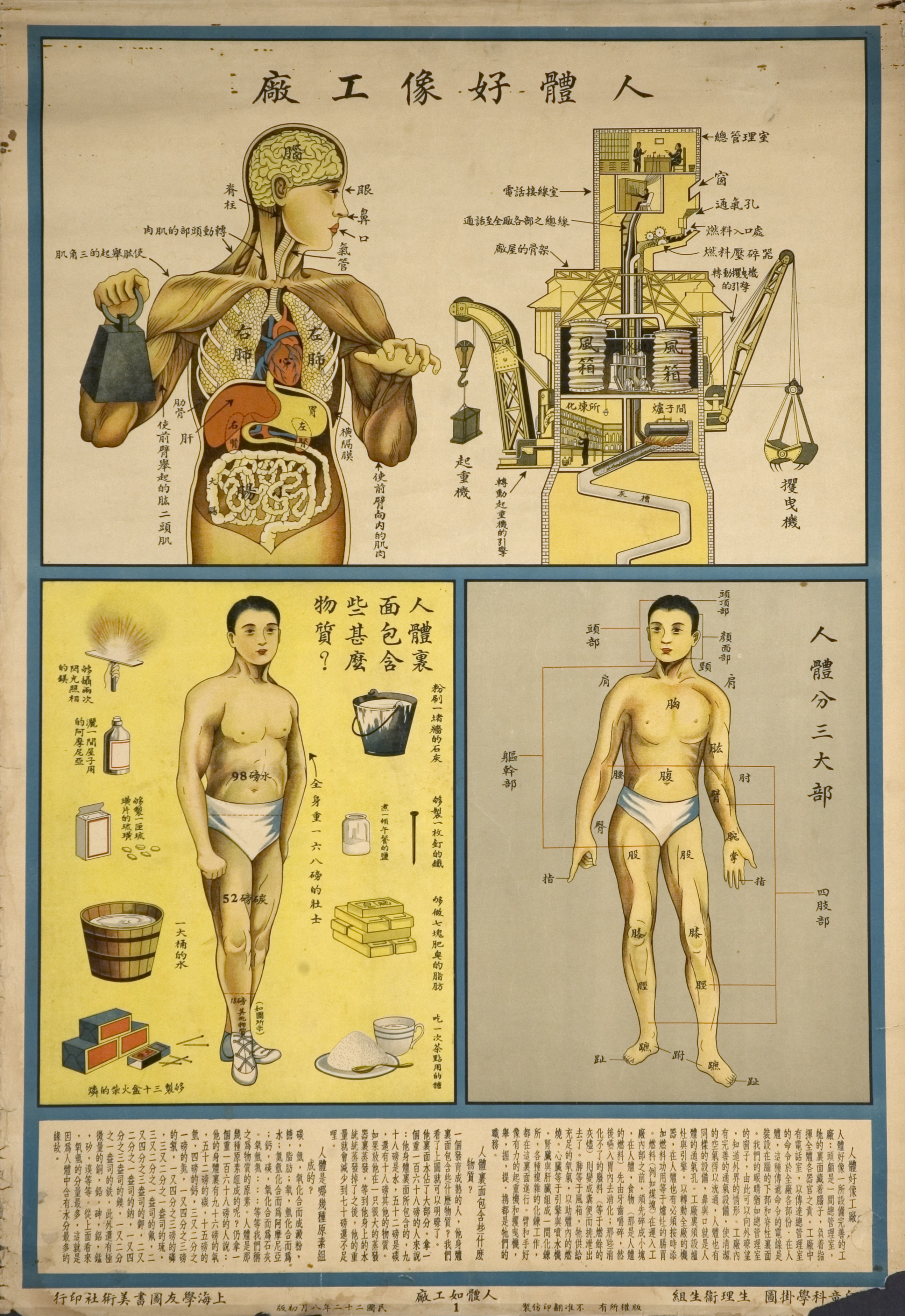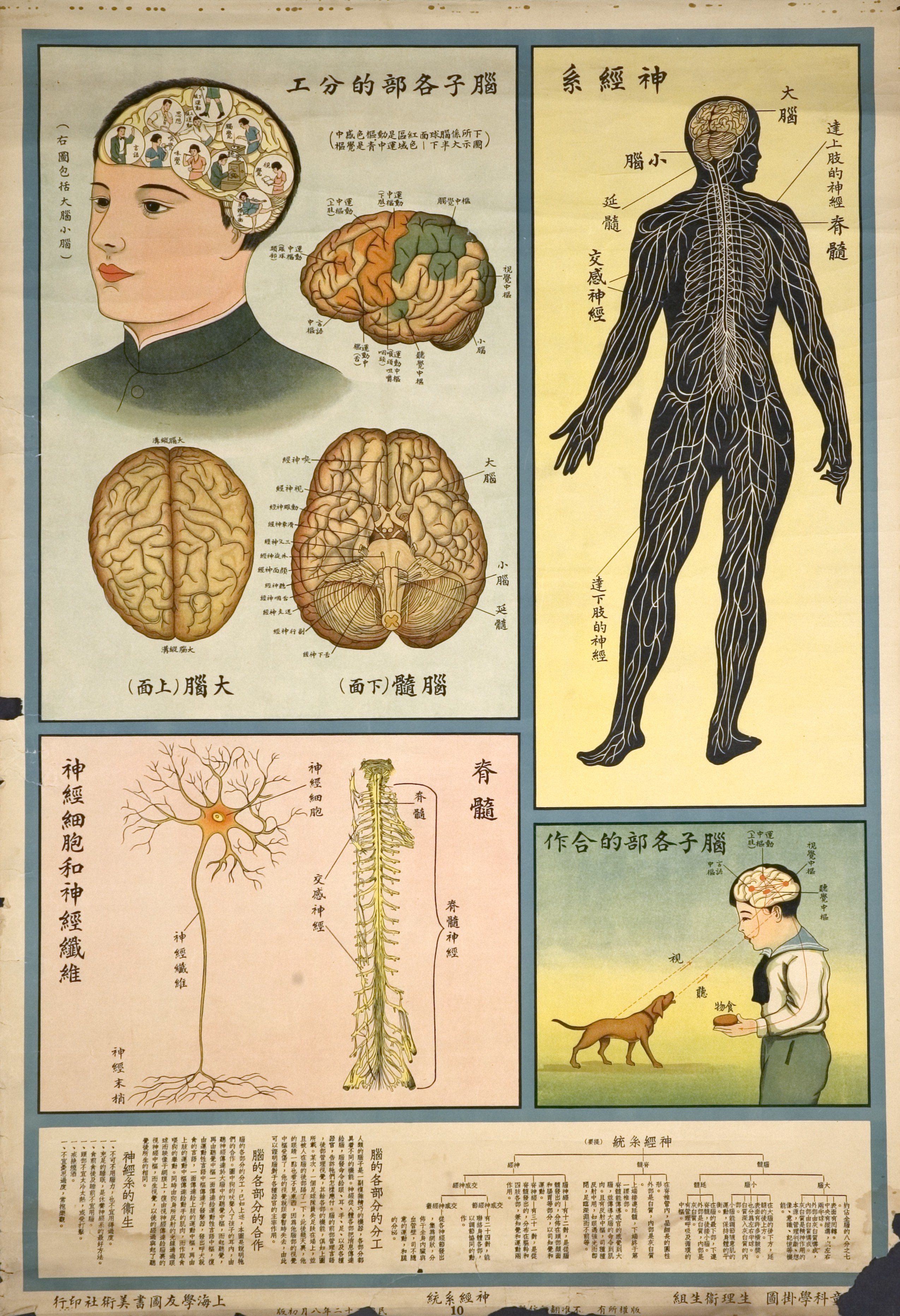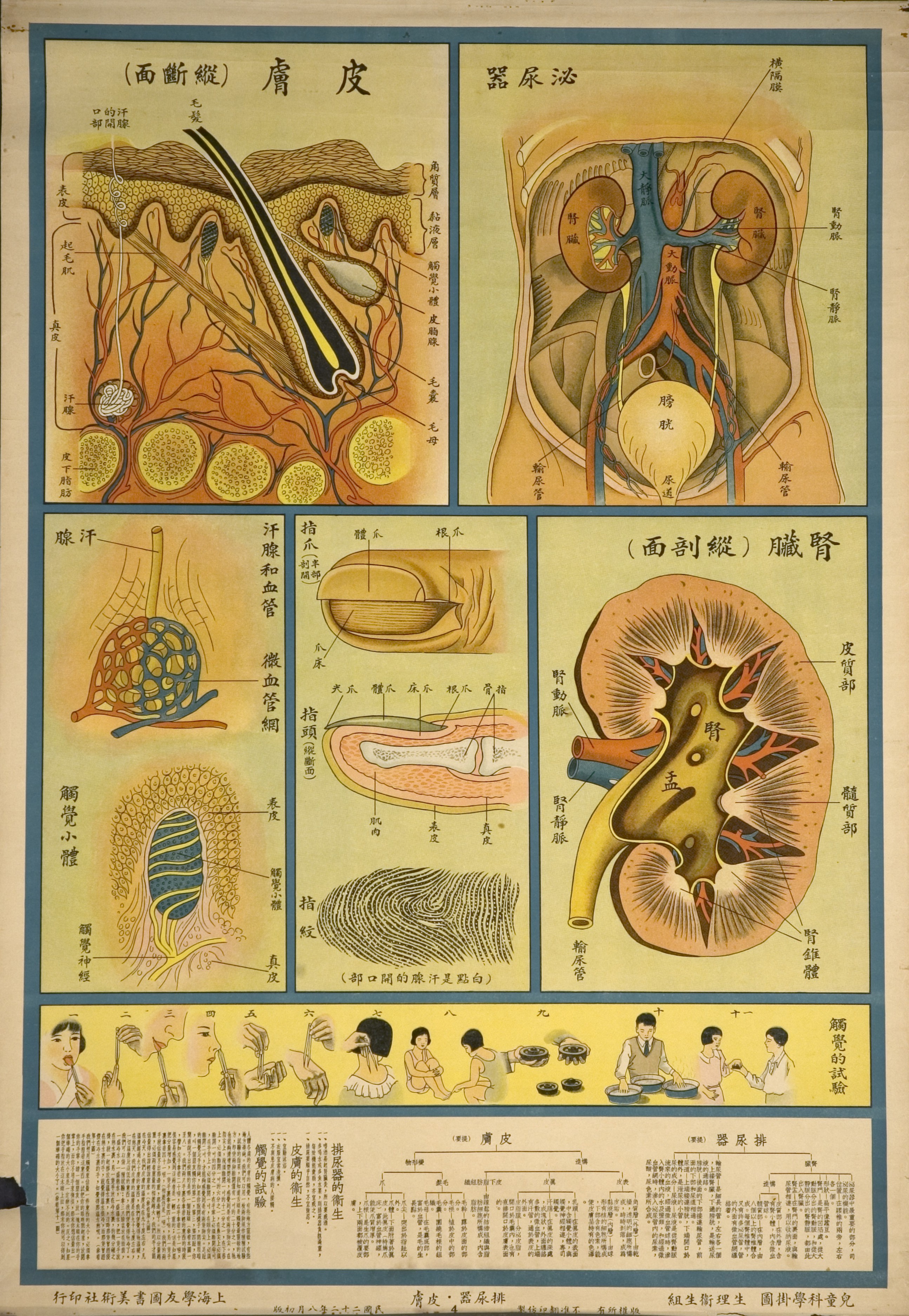











Chinese public health posters
U.S. National Library of Medicine
1933, 1951
1. Parasitic pathogens. The poster consists of 2 images. The top image shows the life cycles of parasites. The bottom image shows the routes of transmission of parasites in the human body.
2. Human body is like a factory. The poster consists of 3 images. The top image compares the human body to a factory; the bottom right image describes body parts; and the bottom left image describes chemical components of the human body. The very bottom part of the poster has texts explaining the human body
3. Nose and tongue. The poster consists of 2 images. The top image shows the anatomy of the nose; the bottom image shows the anatomy of the tongue. The very bottom part of the poster has texts explaining the nose and tongue.
4. Brain, nerve system, and spine. The poster consists of 4 images of the anatomy of the nervous system, including the brain, spinal cord, and periopheral nervous system. The very bottom part of the poster has texts explaining the nervous system and function of the brain.
5. The ear is like a telephone and the eye is like a camera. The poster consists of 2 images. The top image shows the anatomy of the eye and compares the eye to a camera; the bottom image shows the anatomy of the ear and compares the ear to a telephone. The very bottom part of the poster has texts explaining the eye and ear.
6. Muscle system. The poster consists of 2 main images of the anatomy of the skeletal muscle system -- front view and back view. Smaller images on the bottom show the anatomy of an arm, histology of striated muscle, and laborers working with their muscles.
7. Skin, urinary system, and kidney. The poster consists of a series of images showing the anatomy of the urinary tract, skin, kidney, finger, and how to test for senses of touching. The very bottom part of the poster has texts explaining the urinary tract, skin, and tests for senses of touching.
8. Respiratory system. The poster consists of a series of images of the anatomy of the lung, chest cavity, pharynx, respiratory model, and measurements of lung volume.
9. Lungs and breathing exercises. The poster consists of a series of images of the anatomy of lungs, thoracic cavities, pharynx, larynx, and pulmonary alveoli. The very bottom part of the poster has texts explaining breathing and breathing exercises.
10. Heart, circulatory system, and veins. The poster consists of 4 images: the anatomy of heart, model of blood circulation, blood vessels, and the physiology of blood coagulation and immunity response against pathogens from white blood cells. The very bottom part of the poster has texts explaining blood circulation, blood coagulation, and white blood cells.
11. Excretory system. The poster consists of 2 large images of the anatomy of the skin, nail, and urinary tract. 3 small images show the functions of the skin and people taking different types of baths or sunbaths.
12. Nervous system. The poster consists of 4 images of the anatomy of the nervous system and the functions of brain.